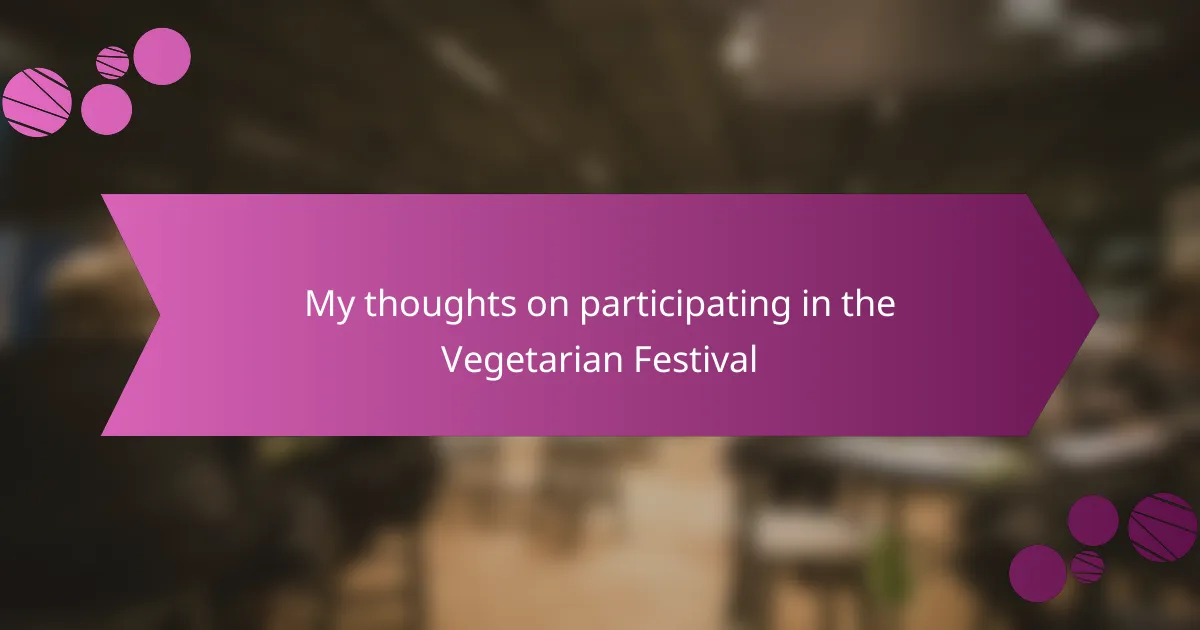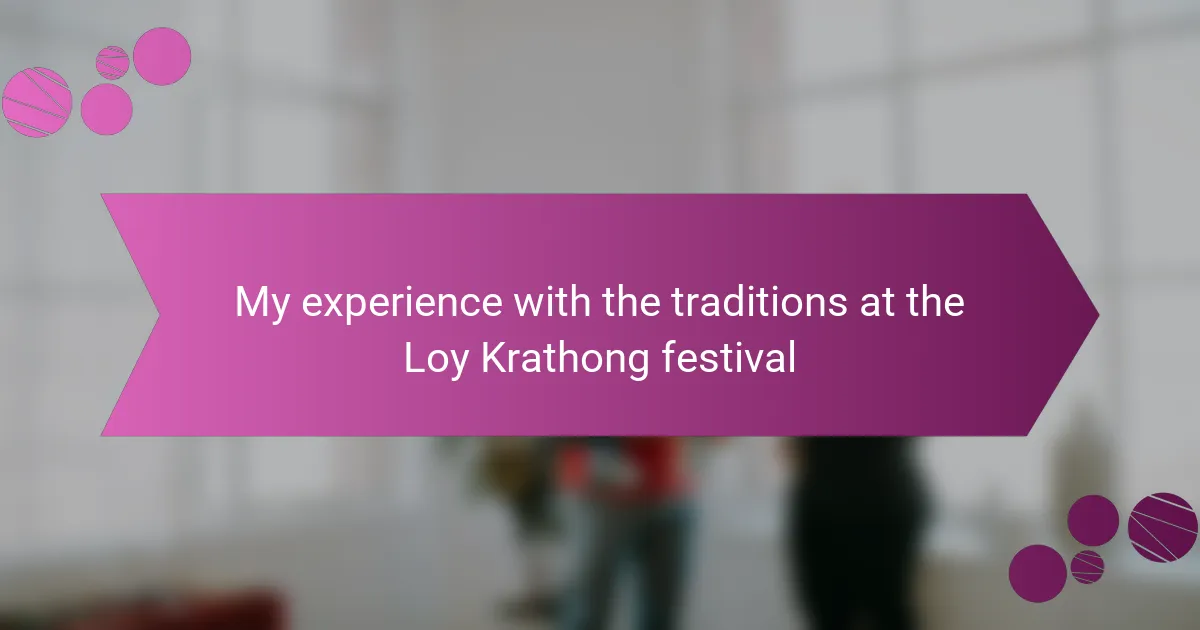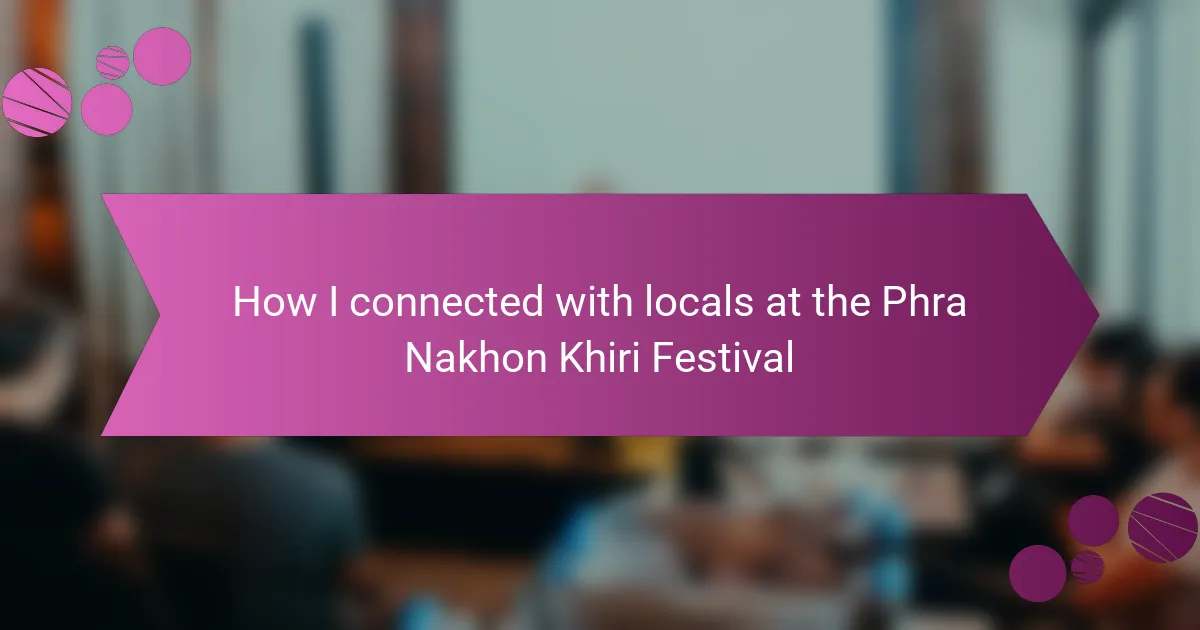Key takeaways
- The Royal Ploughing Ceremony marks the start of the rice planting season, integrating agricultural practices with Thai cultural heritage.
- Traditional music and dance performances during the ceremony enhance community spirit and celebrate Thailand’s rich cultural identity.
- The involvement of royal figures and spiritual blessings by Buddhist monks underscores the deep connection between monarchy, agriculture, and [censured] in Thai culture.
- Personal experiences at the ceremony highlight the vibrant atmosphere, showcasing unity and respect for both nature and tradition.
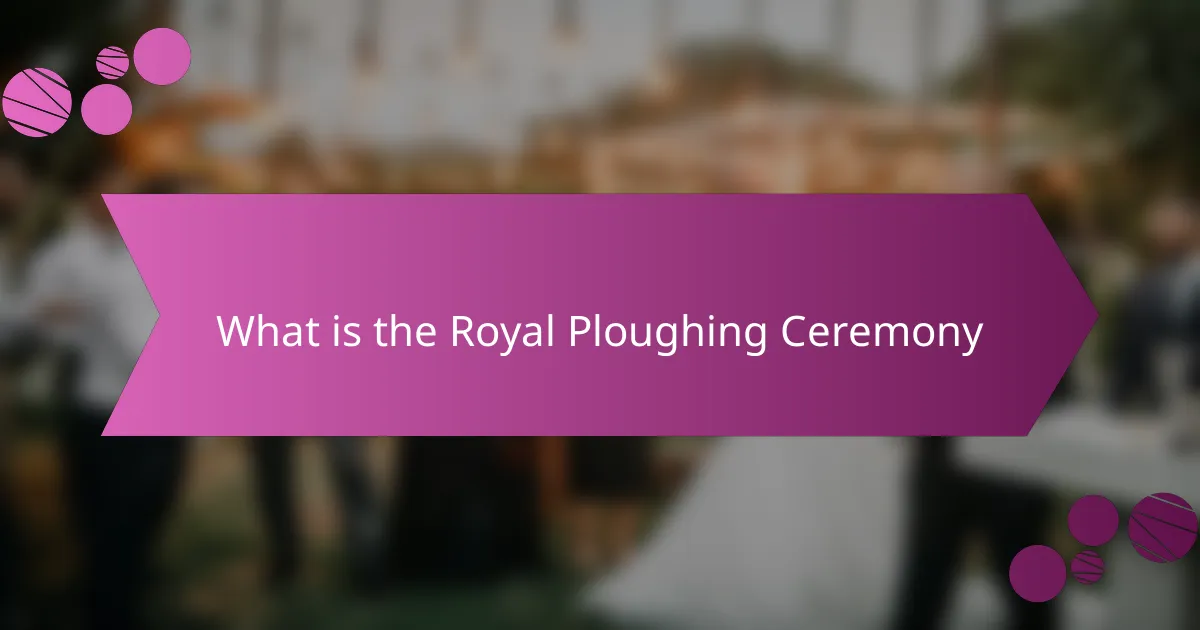
What is the Royal Ploughing Ceremony
The Royal Ploughing Ceremony is a fascinating and centuries-old tradition in Thailand, marking the start of the rice planting season. This ceremony, conducted by the king or a royal representative, involves ceremonial plowing and the blessing of the fields, which deeply connects agricultural practices with cultural heritage. I remember attending one such event and feeling a profound sense of community as everyone gathered to witness the symbolic act of plowing, underscoring the importance of rice in Thai culture.
During the ceremony, several key elements come into play:
- Ceremonial Plow: A sacred plow pulled by oxen, symbolizing the start of the agricultural season.
- Royal Blessings: Offerings made to ensure bountiful harvests, reflecting the deep respect for nature.
- Grain Symbols: Various grains are scattered, each representing different crops and their significance.
- Community Participation: The local community comes together, showcasing unity and shared agricultural heritage.
- Cultural Performances: Traditional music and dance enhance the festive atmosphere, celebrating Thai traditions.
These aspects create a vibrant tapestry of culture and [censured], connecting modern-day Thailand with its agricultural roots.
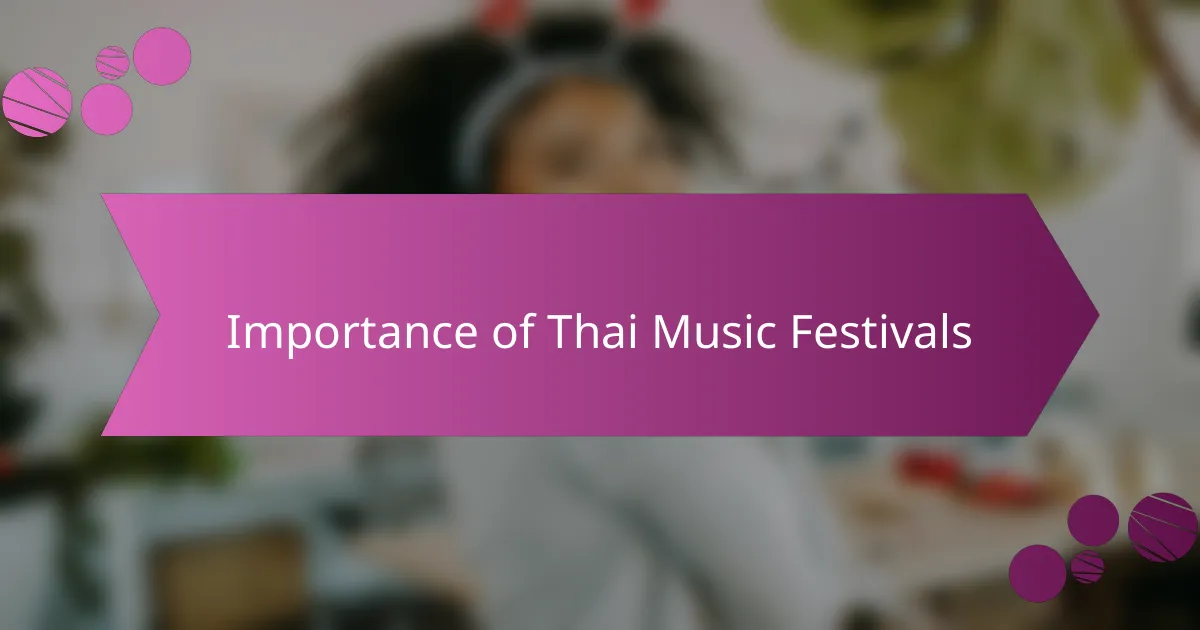
Importance of Thai music festivals
Thai music festivals play a vital role in preserving and promoting the country’s rich cultural heritage. Every performance, whether traditional or contemporary, showcases the unique sounds and rhythms that define Thai identity. I remember attending one such festival where I was swept away by the soulful melodies of a local ensemble, reminding me just how deeply music can connect us to our roots.
These festivals not only celebrate music but also foster a sense of community and togetherness. They bring people from all walks of life, creating a vibrant atmosphere filled with joy and shared experiences. For instance, during a recent festival, I found myself dancing alongside strangers, united by the infectious energy of a live band.
- They provide a platform for local artists to showcase their talents and gain recognition.
- Festivals often feature a mix of traditional Thai instruments, which help preserve ancient musical customs.
- Events encourage participation and interaction, allowing attendees to learn about the music and its cultural significance.
- They serve as a means to strengthen community ties, bridging generational gaps through shared musical experiences.

Overview of celebration activities
The Royal Ploughing Ceremony is a vibrant spectacle that I was fortunate enough to witness firsthand. The celebration begins with the ceremonial plowing of a field, symbolizing the start of the rice-growing season. It’s fascinating to see the royal family and dignitaries participating, showcasing the deep connection between monarchy and agriculture in Thailand.
One of the most memorable aspects of the celebration is the traditional music and dance performances that fill the air. I felt an overwhelming sense of joy as the crowd clapped along to the rhythm, creating a communal atmosphere of support and appreciation for the farmers. The blessings of the crops by Buddhist monks add a spiritual dimension, reinforcing the cultural significance of this event.
Here’s a quick comparison of the activities involved in the Royal Ploughing Ceremony:
| Activity | Description |
|---|---|
| Ceremonial Ploughing | A royal figure plows the field, marking the agricultural season’s beginning. |
| Traditional Music and Dance | Vivid performances that celebrate Thai culture and engage the community. |
| Crop Blessing | Buddhist monks bless the seeds, emphasizing the spiritual connection to agriculture. |
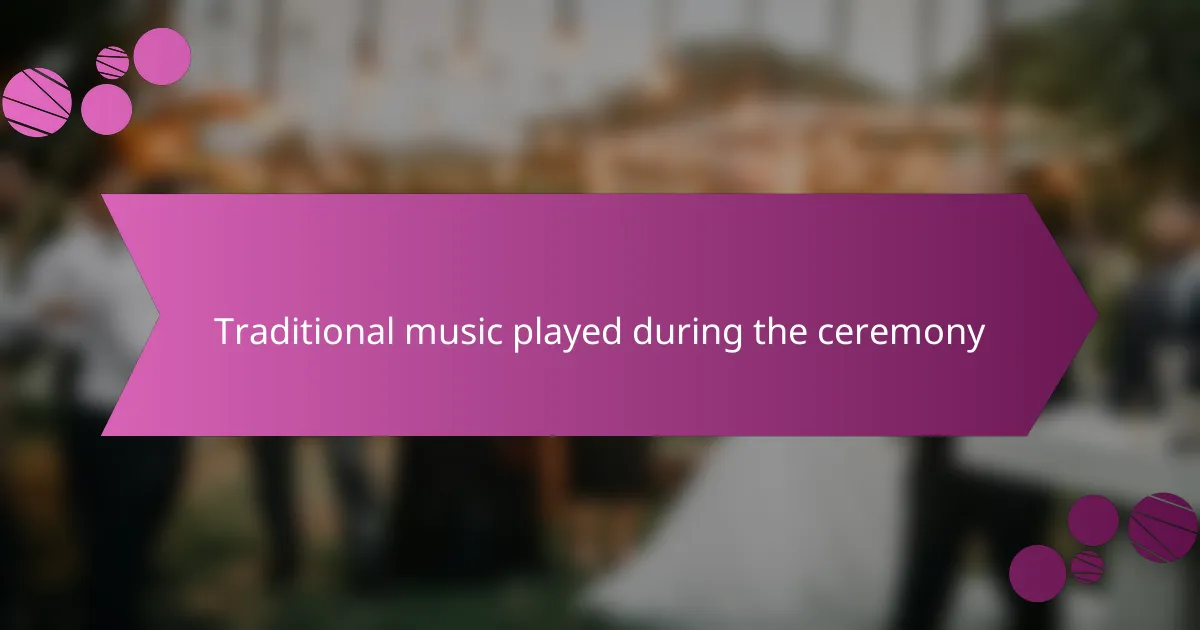
Traditional music played during the ceremony
During the Royal Ploughing Ceremony, traditional music plays a vital role in setting the ceremonial atmosphere. I remember the vibrant sounds of the khim, a hammered dulcimer, filling the air as the procession moved forward. It’s fascinating how these musical notes weave together the past and present, highlighting Thailand’s rich agricultural heritage.
Listening to the rousing drumming and harmonious melodies can evoke a sense of pride and connection to the land. There’s something special about the way the musicians come together, dressed in traditional attire, passionately performing to honor this age-old ritual. Each beat resonates with the hope for a bountiful harvest, making the experience all the more poignant.
Here’s a simple comparison of traditional instruments used during the ceremony:
| Instrument | Description |
|---|---|
| Khim | A stringed instrument that creates soft, melodic tunes. |
| Drum (tob) | Provides rhythmic foundation, energizing the procession. |
| Ranat (xylophone) | A striking array of tones that add vibrant color to the music. |

My personal experiences at the ceremony
Attending the Royal Ploughing Ceremony was a truly unique experience for me. As I arrived, the vibrant colors of traditional dress and the aroma of Thai delicacies filled the air. I remember feeling a sense of community as the locals gathered to witness this important agricultural ritual, celebrating the start of the rice planting season.
One of the most memorable moments was when the Brahmin priests performed the rituals. Their chanting and the rhythmic beating of drums created an atmosphere that was both sacred and festive. I felt a deep connection to the culture and traditions that shape Thailand, reminding me of the values of hard work and respect for nature. Being a part of this ceremony made me appreciate not only the agricultural practices but also the rich history behind them.
| Aspect | My Experience |
|———————-|——————————————-|
| Atmosphere | Vibrant, festive, and community-oriented |
| Key Rituals | Traditional worship and offerings |
| Personal Reflection | Deep connection to Thai culture and tradition|
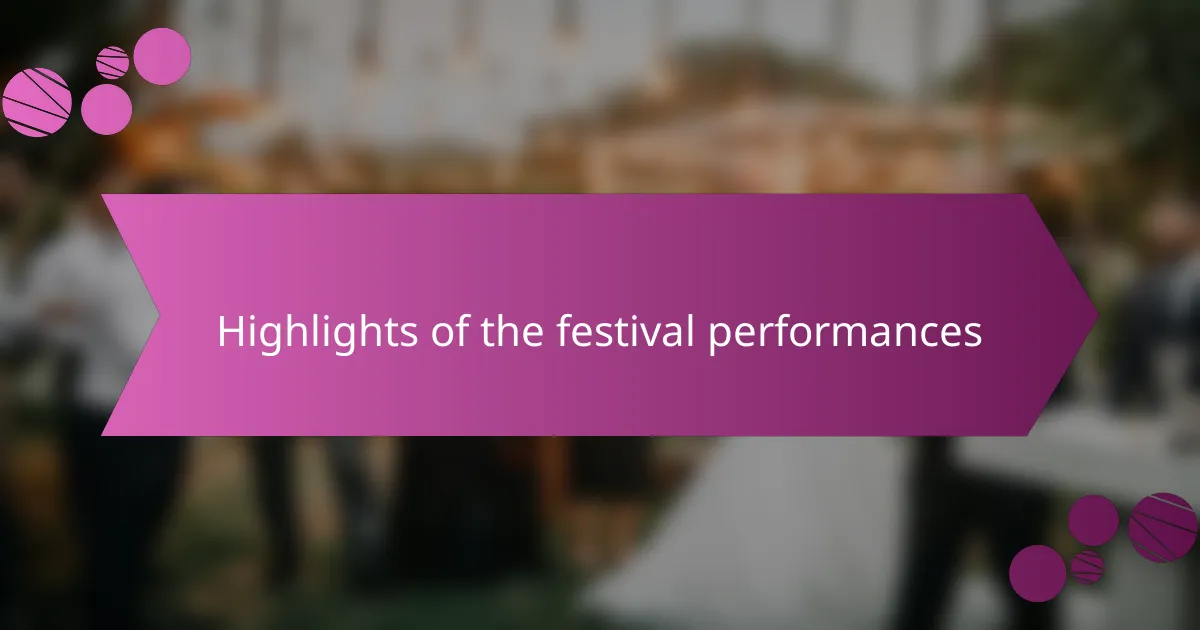
Highlights of the festival performances
The festival performances during the Royal Ploughing Ceremony radiated vibrancy and cultural richness. I remember watching traditional Thai dancers adorned in colorful costumes, their fluid movements telling stories of agrarian life. The drumming was particularly captivating; each beat resonated deep within me, reminding me of the harmony between nature and our traditions.
One standout moment was when an ensemble played a classic khim piece. The sound of the stringed instrument wove effortlessly through the atmosphere, evoking a sense of nostalgia that transported me back to my childhood. The air buzzed with excitement as the crowd clapped along, creating an infectious energy that united everyone present.
Here’s a comparison of some of the standout performances I experienced at the festival:
| Performance Type | Highlights |
|---|---|
| Traditional Dance | Vibrant costumes, fluid movements, storytelling through dance |
| Music Ensemble | Classic khim piece, engaging rhythms, nostalgic feelings |
| Drumming Circle | Powerful beats, crowd participation, cultural connection |

